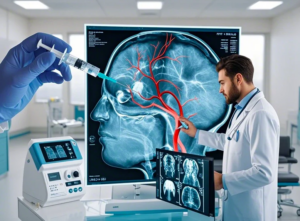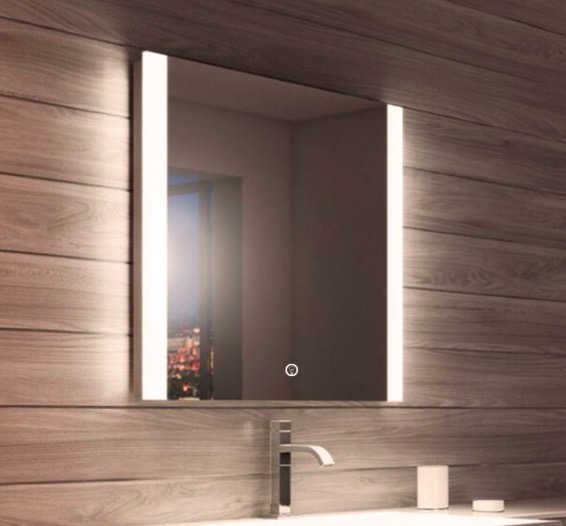How Can 3D Medical Imaging Help Doctors and Patients
Home » How Can 3D Medical Imaging Help Doctors and Patients
RECENT POSTS
Share:
- December 20, 2024
Table of Contents
3D medical imaging technology has revolutionized the field of medicine by providing more detailed and accurate visualization of the human body. From its early beginnings with basic X-ray techniques to the advanced technologies we have today, such as CT scans, MRI, and PET scans, 3D medical imaging has become an indispensable tool in modern healthcare. This technology not only aids in precise diagnosis but also plays a crucial role in treatment planning and improving patient outcomes.
The Principles of 3D Medical Imaging Technology
The core principle behind 3D medical imaging technology is the ability to capture three-dimensional data of a target object and generate realistic 3D images or models on a computer. This is achieved through various techniques such as Time-of-Flight (TOF), Structured Light, and Stereoscopic Vision. TOF measures the time taken by light to travel to the object and back, creating depth maps. Structured Light projects a pattern of light onto the object and captures the deformation of the pattern to generate 3D information. Stereoscopic Vision uses two or more cameras from different angles to capture images and compute depth information.
Applications of 3D Medical Imaging in Diagnosis
1. Enhancing Diagnostic Accuracy with 3D Medical Imaging
One of the primary benefits of 3D medical imaging is its ability to provide more intuitive and comprehensive information about lesions and normal tissues. For example, in diagnosing cardiovascular diseases, 3D images can accurately show the extent of arterial blockages, which is crucial for determining the appropriate treatment. This technology also enhances the diagnosis of tumors, fractures, and other conditions by providing detailed views that are not possible with traditional 2D imaging techniques.
2. Assisting Doctors in Qualitative and Quantitative Analysis
3D medical imaging technology helps doctors visualize the size, shape, and spatial relationships of lesions, which is crucial for both qualitative and quantitative analysis. In preoperative planning, 3D models allow doctors to see the exact dimensions and positions of abnormalities, aiding in the selection of the most appropriate treatment plan. This is particularly important in complex cases such as tumors and fractures, where precise visualization can significantly impact the outcome of the treatment.
Application of 3D Medical Imaging in Surgical Planning and Navigation
1. Developing Accurate Surgical Plans with 3D Medical Imaging
3D medical imaging technology is invaluable in developing accurate surgical plans. By providing a detailed view of the relationship between lesions and surrounding tissues, it enables surgeons to plan procedures with greater precision. For instance, in CT-guided lung puncture surgery, 3D imaging helps accurately locate and target abnormalities, reducing the risk of complications and improving the overall success rate of the surgery.
 2. Surgical Navigation and Real-Time Monitoring with 3D Medical Imaging
2. Surgical Navigation and Real-Time Monitoring with 3D Medical Imaging
During surgery, 3D reconstruction models serve as navigation tools, guiding surgeons and improving the accuracy and safety of procedures. This technology is particularly beneficial in complex surgeries such as vascular diseases and neurosurgery, where precise navigation is critical. Real-time monitoring with 3D imaging allows surgeons to make immediate adjustments, ensuring the best possible outcomes for patients.
3. Personalized Treatment with 3D Medical Imaging
3D medical imaging technology enables personalized treatment by allowing doctors to tailor their approach based on individual patient anatomy. In cases of ureteral malformations or lung tumors, personalized 3D models help in planning surgeries that fit the unique anatomical structures of each patient. This not only improves the effectiveness of the treatment but also reduces the risk of complications and enhances recovery.
Future Development Trends in 3D Medical Imaging Technology
1. Advancements in Data Processing and Analysis
The future of 3D medical imaging technology lies in the integration of big data and advanced data processing techniques. As the volume of medical imaging data continues to grow, there will be an increasing focus on developing methods to efficiently process and analyze this data. This will lead to more accurate diagnoses and better treatment planning, ultimately improving patient outcomes.
2. Artificial Intelligence and Deep Learning in 3D Medical Imaging
The application of artificial intelligence (AI) and deep learning in 3D medical imaging is set to revolutionize the field. AI algorithms can enhance the accuracy of automatic recognition and segmentation of medical images, reducing the time and effort required by radiologists and doctors. This will enable more efficient and precise analysis, leading to improved patient care.
3. Interdisciplinary Integration of 3D Medical Imaging
3D medical imaging technology will increasingly combine with other fields such as biomechanics and materials science. This interdisciplinary integration will lead to innovative advancements in medical imaging, providing new possibilities for diagnosis and treatment. For example, combining 3D imaging with biomechanics can help in the development of personalized prosthetics and implants, improving patient outcomes.
Conclusion
In summary, 3D medical imaging technology plays a crucial role in modern medicine by enhancing diagnostic accuracy, aiding in surgical planning, and enabling personalized treatment. The precise and efficient treatment solutions provided by 3D medical imaging have significantly improved patient outcomes and hold great potential for the future. As technology continues to advance, 3D medical imaging will undoubtedly play an even more significant role in healthcare, benefiting countless patients around the world.
0

